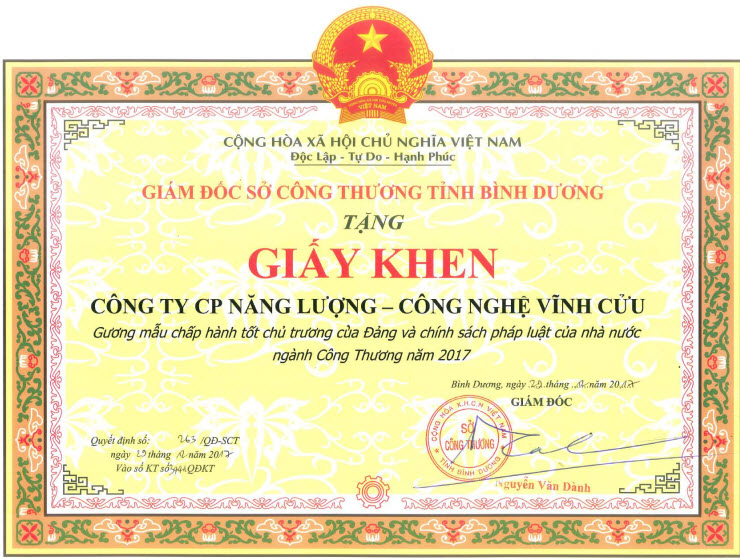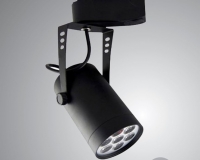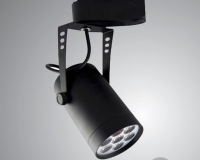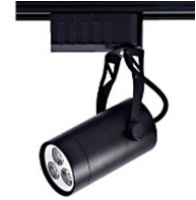The 40th anniversary of National Union in Quang Tri Province
Top News
Mr. Nguyen Quan Chinh, Vice Chairman, People's Committee of Quang Tri Province came to visit the site of LED installation.
THUrsday - 13/08/2015 01:03
- Viewed: 4359
Solutions to Green Energy Trend in Vietnam
The National Strategy for Green Growth 2011-2020 period with a vision to 2050 has been approved by the Prime Minister by Decision No. 1393 / QD-TTg dated 25-9-2012.
To implement this strategy, the Prime Minister has approved the National Action Plan for Green Growth 2014-2020 period, covering four main themes: (1) to set up institutional arrangement and local green growth plan; (2) to reduce the intensity of greenhouse gas emissions and to promote the use of clean energy and renewable energy; (3) the greening of production; and (4) the greening of lifestyles and sustainable consumption.
As reported by the Power Engineering Construction Consulting 3 JSC (PECC3), the potential capacity of onshore wind energy in Vietnam is 21,500 MW, while currently only three wind plants are in operation with a total capacity of 52 MW, less than 0.25% of the potential capacity.
 Meanwhile, taking into account the source of radiation and the long duration of sunshine in Central and the South, if good policy is available, just half of the households in the city installed 1 kWp / household, it has added 1,000 MW to solar power. That is not to mention the potential installation on buildings, offices, industrial facilities, and the open ground and the capacity nationwide, the solar power growth potential is extremely large. However, so far only less than 1 MW of solar power is installed throughout the territory of Vietnam, according to a comprehensive report collated and released by Mr. Trinh Quang Dung in May, 2015.
Meanwhile, taking into account the source of radiation and the long duration of sunshine in Central and the South, if good policy is available, just half of the households in the city installed 1 kWp / household, it has added 1,000 MW to solar power. That is not to mention the potential installation on buildings, offices, industrial facilities, and the open ground and the capacity nationwide, the solar power growth potential is extremely large. However, so far only less than 1 MW of solar power is installed throughout the territory of Vietnam, according to a comprehensive report collated and released by Mr. Trinh Quang Dung in May, 2015.
Biomass energy calculated on the theoretical potential capacity from rice husk, the 9 million tonnes of husk around the country today could generate 4,800 MW, but currently no husk fueled power plant exist for operation. There are 40 sugar mills which use bagasse for co-generation of heat and power but only six of them can sell electricity to the national grid with a total installed capacity of MW 88.5, according to data from GIZ in 2014.
Bioenergy (biogas) with small scaled generation is developed and used well in the household and in a few wastewater treatment plants where biogas is collected. The Report on Current Status of Environment 2011 by the Ministry of National Resources and Environment shows that as of 2009, the amount of domestic solid waste is 19 million tonnes /year, and the annual increase rate is 10%. The potential electricity generated from incineration is about 200 MW, but so far no incineration plant has been operating in Vietnam. Uniquely at Go Cat landfill (HCMC) there is a solid waste-fueled power plant with a capacity of 2.4 MW, but it is in unstable operation because the peak period of gas generation is over.
Lately, the Government has issued many policies and mechanisms to promote the development of renewable energy, including wind power, biomass power, electricity generated from the waste, and solar power. However, the investment in renewable energy development in Vietnam has been going on at a very slow pace, and the biggest bottleneck is the low purchase price of electricity from renewable energy. The highest purchase price for electricity from renewable energy is found in projects generating electricity from incineration with 10.05 cents/kWh, yet no master plan for generating electricity from waste incineration is found at the local and national levels, nor the pricing framework for domestic waste treatment as other revenue for power projects generating electricity from incineration.
Obviously, the priority given to development of green investment, selection of economic sector, industrial sector or the low-carbon technologies is a smart choice to achieve high growth while maintaining low energy demands, following the successful practice in Singapore, South Korea, and Japan.
Energy saving is potentially large
To implement this strategy, the Prime Minister has approved the National Action Plan for Green Growth 2014-2020 period, covering four main themes: (1) to set up institutional arrangement and local green growth plan; (2) to reduce the intensity of greenhouse gas emissions and to promote the use of clean energy and renewable energy; (3) the greening of production; and (4) the greening of lifestyles and sustainable consumption.
As reported by the Power Engineering Construction Consulting 3 JSC (PECC3), the potential capacity of onshore wind energy in Vietnam is 21,500 MW, while currently only three wind plants are in operation with a total capacity of 52 MW, less than 0.25% of the potential capacity.

Biomass energy calculated on the theoretical potential capacity from rice husk, the 9 million tonnes of husk around the country today could generate 4,800 MW, but currently no husk fueled power plant exist for operation. There are 40 sugar mills which use bagasse for co-generation of heat and power but only six of them can sell electricity to the national grid with a total installed capacity of MW 88.5, according to data from GIZ in 2014.
Bioenergy (biogas) with small scaled generation is developed and used well in the household and in a few wastewater treatment plants where biogas is collected. The Report on Current Status of Environment 2011 by the Ministry of National Resources and Environment shows that as of 2009, the amount of domestic solid waste is 19 million tonnes /year, and the annual increase rate is 10%. The potential electricity generated from incineration is about 200 MW, but so far no incineration plant has been operating in Vietnam. Uniquely at Go Cat landfill (HCMC) there is a solid waste-fueled power plant with a capacity of 2.4 MW, but it is in unstable operation because the peak period of gas generation is over.
Lately, the Government has issued many policies and mechanisms to promote the development of renewable energy, including wind power, biomass power, electricity generated from the waste, and solar power. However, the investment in renewable energy development in Vietnam has been going on at a very slow pace, and the biggest bottleneck is the low purchase price of electricity from renewable energy. The highest purchase price for electricity from renewable energy is found in projects generating electricity from incineration with 10.05 cents/kWh, yet no master plan for generating electricity from waste incineration is found at the local and national levels, nor the pricing framework for domestic waste treatment as other revenue for power projects generating electricity from incineration.
Obviously, the priority given to development of green investment, selection of economic sector, industrial sector or the low-carbon technologies is a smart choice to achieve high growth while maintaining low energy demands, following the successful practice in Singapore, South Korea, and Japan.
Energy saving is potentially large
The Report by the Energy Conservation Center of Ho Chi Minh City in March 2015 shows that 30% of steel industry businesses use outdated technology, 40% of enterprises use intermediary technology, and these enterprises account for a total of 75-80% of the capacity of steel industry in Vietnam. In the sector of seafood processing industry and frozen foods, a survey in 250 enterprises in HCM City, Ben Tre, Ba Ria-Vung Tau, Dong Thap, Long An, shows that only 38 enterprises apply energy saving measures, with main focus on low investment solutions, a little savings like some application in lighting solutions, or timing solutions to manage the power use such as avoiding peak-hour production, only 6/250 enterprises did make investment into improvements of refrigeration system.
In the ceramic tile industry, a survey in 125 enterprises in Binh Duong, Long An and Ben Tre shows that only 41 enterprises apply energy saving solutions, but also primarily focusing on lighting system, 100% of businesses cannot afford financially the technological innovation.
Thus, we can see that the potential for energy savings in industry in Vietnam is still very high, in which power energy can be saved to reduce the demand pressure on the development of electricity generation sources.
In the ceramic tile industry, a survey in 125 enterprises in Binh Duong, Long An and Ben Tre shows that only 41 enterprises apply energy saving solutions, but also primarily focusing on lighting system, 100% of businesses cannot afford financially the technological innovation.
Thus, we can see that the potential for energy savings in industry in Vietnam is still very high, in which power energy can be saved to reduce the demand pressure on the development of electricity generation sources.
Author: Trong Tan
Source: vneec.gov.vn
Source: vneec.gov.vn
Newer articles
- New app could cut domestic energy use by 10% (19/08/2015)
- Bright lessons for London school (17/08/2015)
- Quang Binh: Solar power project to benefit far-flung areas (17/08/2015)
- Project GetGreen Vietnam (17/08/2015)
- Solar panel coating increases energy output by (13/08/2015)
Older articles
- USA - Vietnam Cooperation and Development of Clean Energy and Energy Efficiency (11/08/2015)
- Enertec Expo 2015 on Energy Savings Kicks Off its 5th Exhibition (05/08/2015)
- Ba Ria - Vung Tau, over 31 million kWh of Electricity Saved in the First 6 Months (05/08/2015)
- Five-Year Enforcement of the Law on Economical and Efficient Use of Energy Recorded with Milestones (05/08/2015)
- Engineered hybrid crystal opens new frontiers for high-efficiency lighting (28/07/2015)
Devices
Consultancy
Energy Audit
ONLINE
(0909.901.045)
Energy Audit
ONLINE
(0909.901.045)
| MOU SIGNING CEREMONY ABOUT SPECIAL LED WITH COB TECHNOLOGY FOR FISHING SHIPS BETWEEN QUANG TRI PPC AND NEDO |







































